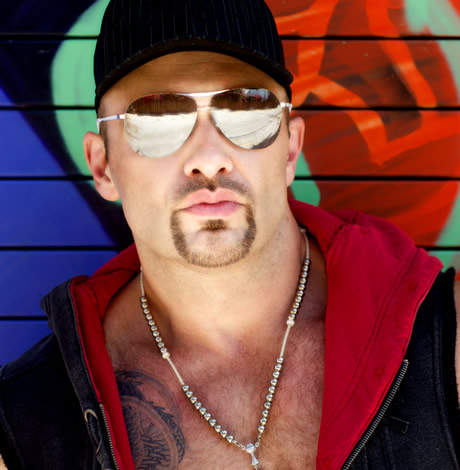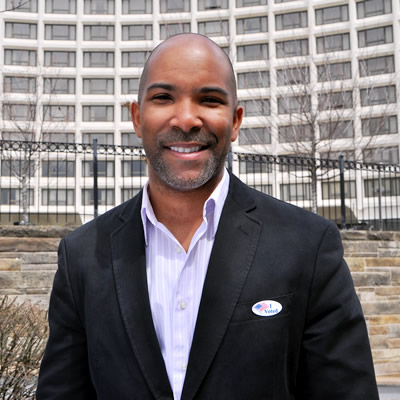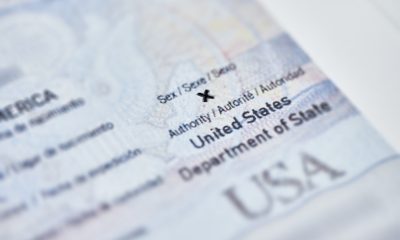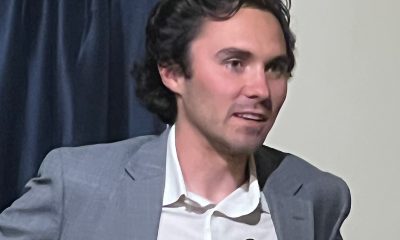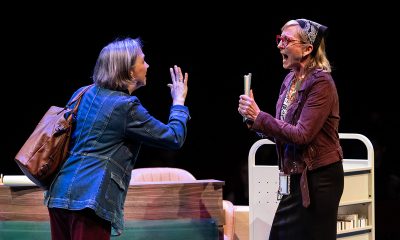Miscellaneous
Gay man to lead national disability group
Perriello sees parallels between LGBT, disability advocacy
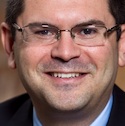

Mark Perriello is president and CEO of the American Association of People with Disabilities. (Photo courtesy of Perriello)
For many, coming out as LGBT after growing up Catholic would be challenging enough. Yet for former Obama administration aide Mark Perriello, 36, who grew up in Chelmsford, Mass., outside Boston, that was only one of the challenges that he had to face. Visually impaired since he was a child, he had to come out not only as gay but as a person with a disability.
Today, Perriello, known in the LGBT community as a political strategist, is the new president and CEO of the American Association of People with Disabilities, the country’s largest cross-disability membership group. Perriello’s well-regarded grassroots development and political strategizing in the LGBT community played a key role in his appointment to this position, said AAPD board members, who believe these skills will empower the bi-partisan, disability advocacy organization. He took the helm of AAPD on June 6.
In an interview the with Blade in his K Street office in Washington, D.C., Perriello discussed the parallels between the LGBT and disability civil rights movements and his goals for AAPD. (This month, in commemoration of the passage of the Americans with Disabilities Act on July 26, 1990, is Disability Pride Month.)
In his boyhood, he was taught that being gay was a sin, Perriello said. In his youth, he became involved with the ex-gay movement.
“I thought that if I just prayed hard enough, that I would be able to change,” Perriello said.
Perriello didn’t come out until he was a student at Rhodes College in Memphis, Tenn., where he graduated with a bachelor’s degree in religious studies. “I had a lot of positive role models,” he said, “they helped me to be comfortable with the fact that I’m gay.”
Yet, as difficult as coming to terms with his sexual orientation was for him, Perriello also had to become comfortable within himself about having and disclosing his disability. His vision impairment is a result of an infection called toxoplasmosis. He is blind in his right eye and, with corrective lenses, has 20/20 vision in his left eye.
“In many ways it was more challenging to come out as a person with a disability than it was to come out as LGBT,” Perriello said, “There is a lot of stigma that unfortunately in our society goes along with disability.”
From grade school through college, he was teased about his vision impairment, Perriello said. Other students would have him close his left (sighted) eye to find out what they could do in front of him that he couldn’t see, he said. “Some of it would be more subtle,” Perriello said, “from preconceived notions of whether I could perform in an athletic environment … all the way to people thinking it was a great trick at fraternity parties, which was less subtle.”
But the bullying, though painful, made him stronger, Perriello said, “because you know when the teasing needs to stop.”
He’s always identified as a person with a disability and viewed disability as a civil rights issue, Perriello said. But, “I didn’t become engaged in the disability community until I began working at the White House,” he added.
Before joining the Obama administration, Perriello’s civil rights advocacy took place in the LGBT community. He served in leadership roles — fundraising, organizing and developing communication strategies at the Human Rights Campaign and the Gay & Lesbian Victory Fund and Leadership Institute. Perriello also was vice president of BNA Communications and a senior associate at Scott + Yandura.
In the Obama administration, Perriello served as the White House liaison at the U.S. Department of the Interior and the White House Priority Placement director. In this position, he became actively involved with the disability community, Perriello said.
“Working to help qualified candidates from under-represented groups find employment in the Obama administration, I witnessed the challenges that people with disabilities often face in the hiring process,” he said.
Disabled people, looking for work, sometimes encounter accessibility issues such as lack of wheelchair access, Perriello said. “Some employers fear that there’s too much cost in providing assistive technology or other types of accommodation,” he said. “Other employers feel that people with disabilities lack the intellectual capacity to work,” Perriello said. “This is not the case.”
As Priority Placement Office head, Perriello worked with AAPD’s board. “I came to believe that this civil rights fight is one that has a lot of work ahead,” he said.
He looks forward to helping AAPD work to overcome the stigma and injustice encountered by many with disabilities, Perriello said.
“It’s going to take a long time, but you know it and I know it. Americans with disabilities are just like everyone else,” he said. “They show up and do good work.”
LGBT culture is “very image conscious” and there is some stigma against people with disabilities that goes along with that, Perriello said. “But it’s the same stigma whether you’re gay or straight,” he said. “The challenges are the same. Whether it’s lacking access to a bar or some other social environment.”
We’re hit daily with stereotypical images of people with disabilities through social media, TV and movies, Perriello said. “This is true in gay and straight culture. At AAPD we’re hoping to change that.”
As an example of this effort, Perriello cited AAPD’s 2011 Gala, where the group bestowed its Image Award on the cast and creative team of “Glee,” for the show’s diversity, including its disability storylines, and characters and actors with disabilities.
There are parallels between the disability and the LGBT civil rights movements, Perriello said. Just as there are people in the LGBT community who aren’t active politically, he said, “there are a lot of Americans with disabilities out there that aren’t engaged in the [disability] civil rights fight.”
Perriello, working with the AAPD team, is determined to strive to make the disability community more engaged on the political level. There are strategies and tactics that he used as an LGBT political strategist, that can be used to engage the disability community, Perriello said. “Anything from making it easier for folks to understand the positions of their elected officials, to seeing how we can work to influence elections and show … that we’re a powerful constituency.”
Helping to connect folks with the best employers and the best companies to work for is something that the LGBT community does well, Perriello said. “It’s something that we [in the disability community] could do as well if not better.”
To be engaged, you have to have a “sense of self-worth,” Perriello said. You have to show the next generation, “that you can do whatever you want. That is a parallel to the LGBT community. It happens because folks are out there, they’re leading businesses—they’re elected officials.”
The challenges Perriello faces are formidable. Seventy percent of Americans with disabilities are unemployed or under employed, according to the U.S. Census Bureau.
Twenty-five percent of people with disabilities surveyed by a 2010 Harris Poll were unfamiliar with the ADA, a civil rights law prohibiting disability-based discrimination in employment and public accommodations.
Perriello is well-suited to meet these challenges, said Cheryl Sensenbrenner, a former AAPD board chair, in a telephone interview. “His grassroots and organizing skills honed in the LGBT community are transferable,” she said, “He’s well-suited to take AAPD to the next level.”
Winnie Stachelberg, senior vice president of external affairs of the Center for American Progress, describes herself as a “huge fan” of AAPD and of Perriello.
“I met Mark over a decade ago when I hired him to work for HRC,” said Stachelberg. “Mark intuits how to help diverse people work well together to focus on a common goal. He won’t be the loudest voice, but he’ll be the one driving change.”
Miscellaneous
Stephen Miller’s legal group sues Fairfax County schools
Lawsuit challenges policies for transgender, nonbinary students
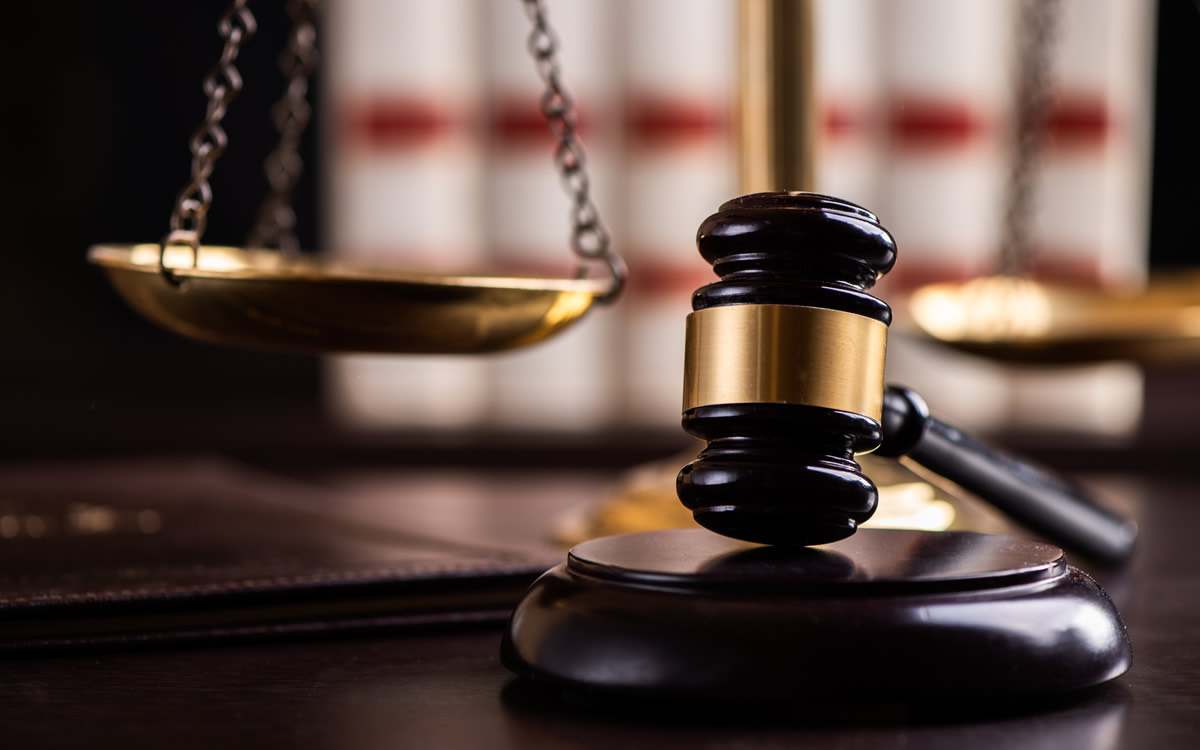
Former Trump administration official Stephen Miller’s legal group on Tuesday filed a lawsuit against the Fairfax County School District over its policies for transgender and nonbinary students.
America First Legal in a press release notes it filed the lawsuit against the school district on behalf of a female, “practicing Roman Catholic” student “for allowing teenage boys to use the female restrooms and for forcing a radical, government-sponsored gender indoctrination and approved-speech scheme that discriminates against students on the basis of sex and religion and violates their free speech rights under the Virginia Constitution.”
The lawsuit was filed in Fairfax County Circuit Court.
The Virginia Department of Education last July announced new guidelines for trans and nonbinary students for which Republican Gov. Glenn Youngkin asked. Equality Virginia and other advocacy groups claim they, among other things, would forcibly out trans and nonbinary students.
Fairfax County schools are among the school districts that have refused to implement the guidelines.
“Fairfax County Public Schools appears to believe that its policies and regulations can override the Virginia Constitution’s protections for religious beliefs, speech and from government discrimination on the basis of sex and religious beliefs,” said America First legal Senior Advisor Ian Prior in a press release. “It is well past time for FCPS to stop sacrificing the constitutional rights of its students so that it can implement a state-sanctioned ideology that demands compliance in speech, beliefs and conduct.”
FCPS Pride, a group that represents the Fairfax County School District’s LGBTQ employees, described the lawsuit as “abhorrent.”
“We are confident that the school board and the superintendent will strongly and firmly oppose this specious suit and continue to support all students, including transgender and gender expansive students,” said the group in a press list.
Miscellaneous
More than a dozen LGBTQ candidates on the ballot in Va.
Control of the state Senate hangs in the balance
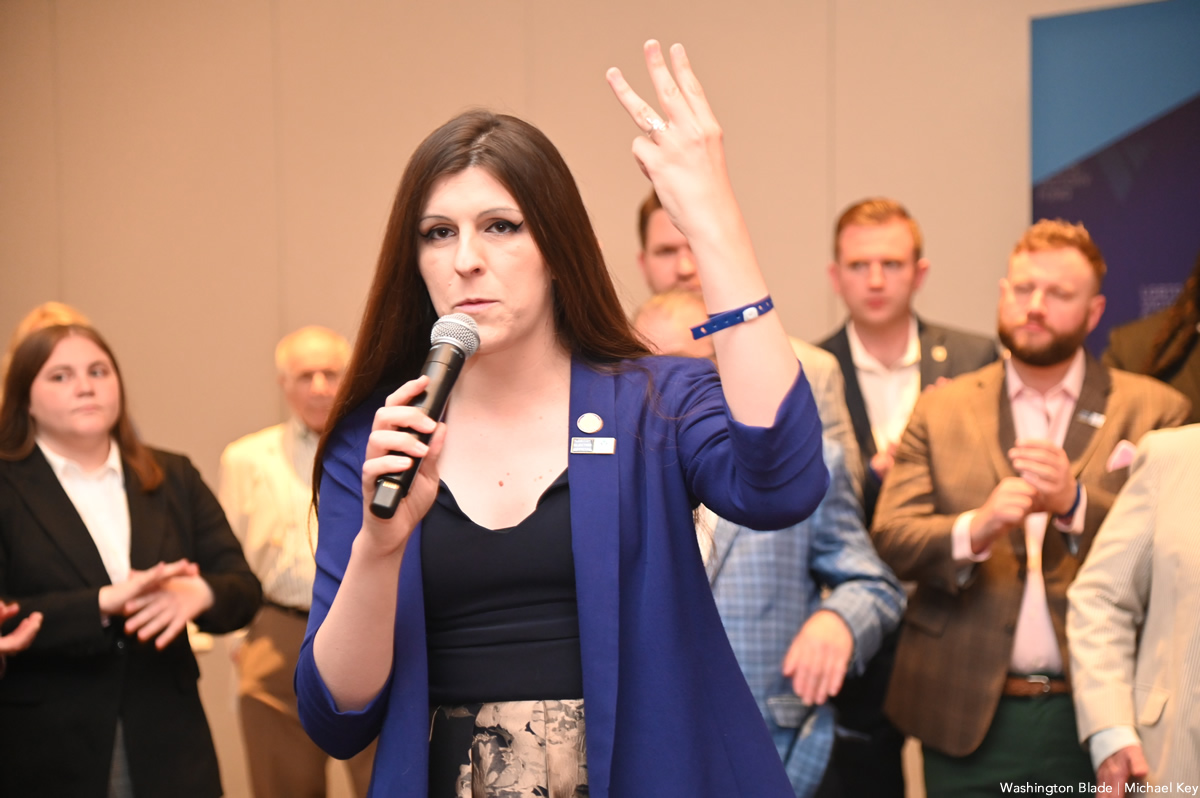
More than a dozen openly LGBTQ candidates are on the ballot in Virginia on Nov. 7.
State Del. Danica Roem (D-Manassas) is running against Republican Bill Woolf in the newly redistricted Senate District 30 that includes western Prince William County and the cities of Manassas and Manassas Park.
Roem in 2018 became the first openly transgender person seated in a state legislature in the U.S. after she defeated then-state Del. Bob Marshall, a prominent LGBTQ rights opponent who co-wrote Virginia’s constitutional amendment defining marriage as between a man and a woman. Roem would become Virginia’s first out trans state senator if she defeats Woolf.
Woolf supports a bill that would require school personnel to out trans students to their parents. The Republican Party of Virginia has highlighted this position in ads in support of Woolf.
“Thank you for reminding me why I won three elections in this district in Prince William County, which is the most diverse county in all of Virginia and the 10th most nationally where we welcome everyone because of who they are, not despite it, no matter what you look like, where you come from, how you worship, if you do, or who you love because you should be able to thrive here because of who you are, never despite it,” said Roem on Sept. 28 in response to a woman who heckled her during a debate with Woolf that took place at Metz Middle School in Manassas.
Gay state Sen. Adam Ebbin (D-Alexandria) is running for re-election in Senate District 39. State Del. Mark Sickles (D-Fairfax County), who is also gay, is running for re-election in House District 43.
Former state Del. Joshua Cole, who identifies as bisexual, is running against Republican Lee Peters in House District 65. State Del. Kelly Convirs-Fowler (D-Virginia Beach), who came out as bisexual last year at Hampton Roads Pride, will face Republican Mike Karslake and independent Nicholas Olenik.
State Del. Marcia “Cia” Price (D-Newport News), a Black woman who identifies as pansexual, is running for re-election in House District 85.
Adele McClure, a queer Democrat, is running to represent House District 2 that includes portions of Arlington County. Laura Jane Cohen, a bisexual woman who is a member of the Fairfax County School Board, is a House of Delegates candidate in House District 15.
Rozia Henson, a gay federal contractor who works for the Department of Homeland Security, is running in House District 19. Zach Coltrain, a gay Gen Zer, is running against state Del. Barry Knight (R-Virginia Beach) in House District 98.
LPAC has endorsed Jade Harris, a Rockbridge County Democrat who is running to represent Senate District 3. Harris’ website notes trans rights are part of their platform.
“Protecting trans rights, repealing right to work, strengthening unions and supporting our farmers are just a few of my legislative priorities,” reads the website. “I am dedicated to addressing the revitalization of our state’s infrastructure, fostering a favorable environment for job creation, and supporting our public education system.”
Republicans currently control the House by a 51-46 margin, while Democrats have a 21-19 majority in the state Senate.
Senate Democrats have successfully blocked anti-LGBTQ bills that Republicans have introduced since Republican Gov. Glenn Youngkin took office in January 2022.
The Virginia Department of Education in July released new guidelines for trans and nonbinary students that activists and their supporters have sharply criticized. They fear that Republicans will curtail LGBTQ rights in the state if they regain control of both houses of the General Assembly on Nov. 7.
“Time and time again, anti-equality lawmakers and the Youngkin administration have made it clear that they will continue to disrespect and disregard the lives and lived experience of LGBTQ+ people within Virginia,” said Equality Virginia PAC Executive Director Narissa Rahaman in August when her organization and the Human Rights Campaign endorsed Roem, Ebbin and other “pro-equality champions.”
“We must elect pro-equality champions who will secure and strengthen our freedoms,” added Rahaman. “We have that chance as the eyes of the nation are on us this November.”
The LGBTQ+ Victory Fund has endorsed Fairfax County School Board Vice Chair Karl Frisch and Fairfax County School Board candidates Robyn Lady and Kyle McDaniel, who identify as lesbian and bisexual respectively.
Michael Pruitt would become the first openly bisexual man elected to the Albemarle County Board of Supervisors if he were to win on Nov. 7. Blacksburg Town Councilman Michael Sutphin and Big Stone Gay Town Councilman Tyler Hughes, who are both gay, are running for re-election.
“Tyler will be a critical voice for equality as the only out LGBTQ+ person on the Big Stone Gap Town Council,” says the Victory Fund on its website.
Cal Benn contributed to this article.
Miscellaneous
What it means to be an active ally to your LGBTQ+ co-workers TEST
Five easy tips to help you avoid common risks
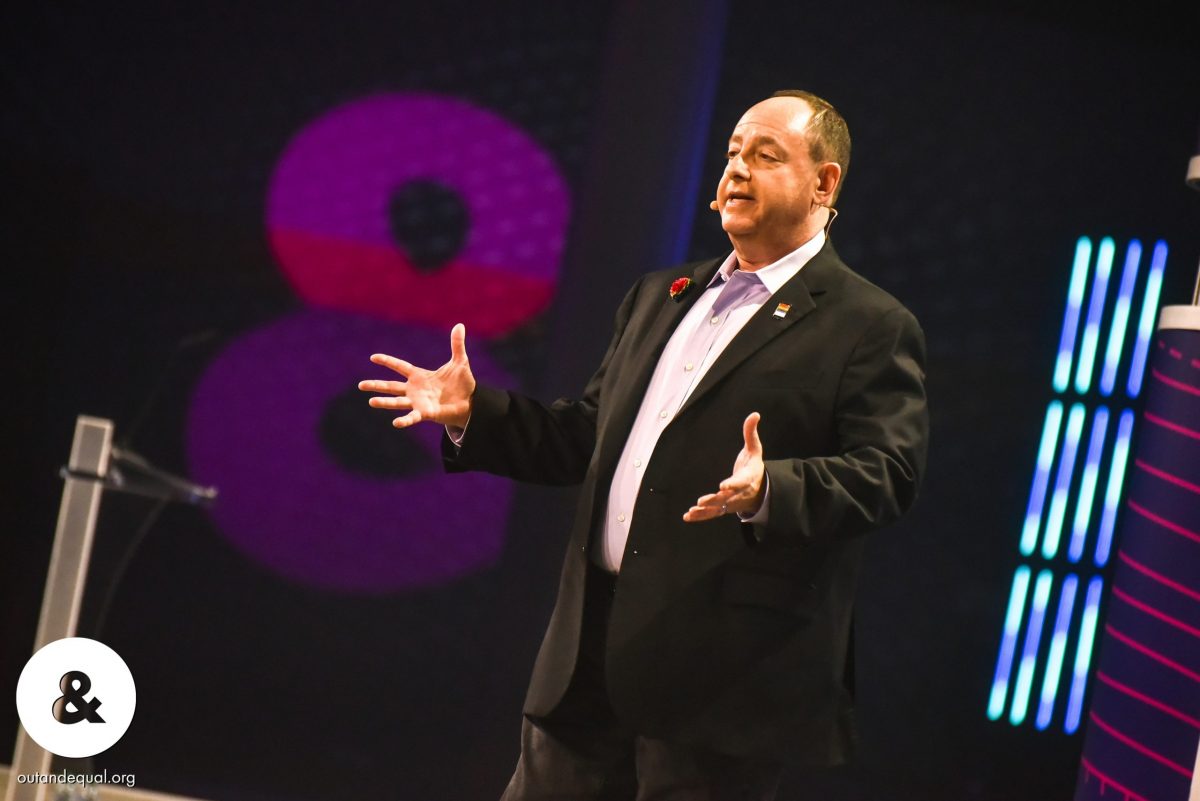
Your home is more than just a place to eat and sleep; it’s your safe haven. As much as you might cherish your home, you should probably also recognize the potential hazards within its familiar walls. Accidents can happen in an instant, yet with a little foresight and some simple adjustments, you can transform your house into a safer haven.
Accidents can happen anywhere, and with a few simple tweaks, you can lower risks in your space. Below you’ll find five tips for each room in your home to help prevent injuries, falls, and other mishaps. In short, home safety.
This article was inspired by a shower in a rental we managed that began leaking through the kitchen ceiling below. If only the landlord had installed grab bars, right!? Below, we’ll guide you through the steps to fortify your bathroom, making it a place of relaxation without the fear of slips and falls. Then, we’ll venture into the room where the magic happens, where proper planning can ensure great nights and peaceful mornings. We’ll show you how to prevent accidents while you experiment becoming the next Gordon Ramsey. And we’ll include a few surprising solutions for those other rooms that hold their own unique hazards, offering solutions to safeguard against unexpected mishaps.
Bathroom Safety
Install Grab Bars: Adding grab bars near the shower and toilet can provide essential support for family members of all ages. Not only can they help with getting in and out, but they can help provide stability when washing. Make sure they are securely anchored to the wall.
Non-Slip Mats: Place non-slip mats inside the shower and bathtub to prevent slips. They’re a small investment that can save you from falls and head injuries.
Adjust Water Temperature: Ensure your hot water is set to a safe temperature to avoid scalding. The hot water heater should be set to around 120°F (49°C)l, the middle setting on many water heater settings.
Medicine Cabinet Locks: If you have young children, use childproof locks on your medicine cabinet to keep harmful substances out of reach.
Proper Lighting: Ensure there’s adequate lighting in the bathroom to avoid trips and falls during nighttime visits. Nightlights can be a simple and effective solution.
Bedroom Safety
Clear Pathways: Keep pathways in the bedroom clutter free to prevent tripping. Ensure there’s enough space to move around comfortably, particularly getting around the bed. Be aware where all furniture is when walking around to avoid stubbed toes, particularly at night.
Secure Rugs: If you have throw rugs, use rug grippers or double-sided tape to keep them from slipping. Loose rugs are a common trip hazard.
Bed Rails: For anyone at risk of falling out of bed, consider installing bed rails to provide extra support and prevent falls.
Nightstands with Drawers: Opt for nightstands with drawers to keep essential items. This reduces the need to get out of bed at night, minimizing the risk of falls, as you race to grab what you need and not lose a moment’s rest.
Fire Safety: Install battery-operated smoke detectors in the bedrooms if there are none. Make sure to install them 36 inches away from an air vent or the edge of a ceiling fan. Also six inches away from the joint between the wall and ceiling. And test smoke detectors regularly.
Kitchen Safety
Non-Slip Flooring: Choose slip-resistant rugs in the kitchen, especially in areas where spills are common. Mats near the sink and stove can also help and you can often buy them fairly cheaply at Costco.
Childproof Cabinets: If you have little ones, use childproof latches on cabinets and drawers to prevent them from accessing potentially hazardous items.
Anti-tip brackets: Install an anti-tip bracket behind the range. These are often used when children are in the home. Although they are less likely to open the oven door and use it as a step stool to get to the stove-top, adults can also benefit from installing these.
Adequate Lighting: Proper lighting is crucial in the kitchen to avoid accidents. Under-cabinet lighting can illuminate work areas effectively.
Secure Heavy Items: Ensure heavy pots and pans are stored at waist level to prevent straining or dropping them from high shelves.
Sharp Object Storage: Keep knives and other sharp objects in a secure drawer or block. And handle all sharp items with extreme care, even when washing and drying. These steps reduce the risk of accidental cuts.
Other Safety Tips
Furniture Anchors: Secure heavy furniture, like bookshelves and dressers, to the wall to prevent tip-overs, especially if you have young children.
Adequate Outlets: Check for damaged outlets and replace them promptly. Avoid overloading circuits with too many devices. Install placeholder plugs in outlets to prevent young curious fingers (or tongues?) from going inside an electrical outlet.
Stair Gates: If your home has stairs, install safety gates at the top and bottom to prevent falls, especially if you have toddlers or pets to keep them off of the stairs when you cannot monitor them.
Emergency Escape Plan: Develop and practice an emergency escape plan with your family, including a designated meeting place outside.
Carbon Monoxide Detector: If your home burns any fossil fuels for heating or appliances, install carbon monoxide detectors in common areas of your home to detect this odorless gas. The D.C. building codes require this if you use a fireplace or if you have an attached garage. In essence, if there is any potential source of carbon monoxide in the home, be sure to install these detectors.
Remember, a safer home not only prevents accidents but also provides peace of mind for you and your family. Implement these simple tips to create a secure environment in every room of your house.
With these practical tips and a few adjustments, you can significantly reduce the risk of injuries and falls in your home. Enjoy peace of mind in your now much safer haven.
Scott Bloom is owner and senior property manager of Columbia Property Management.


